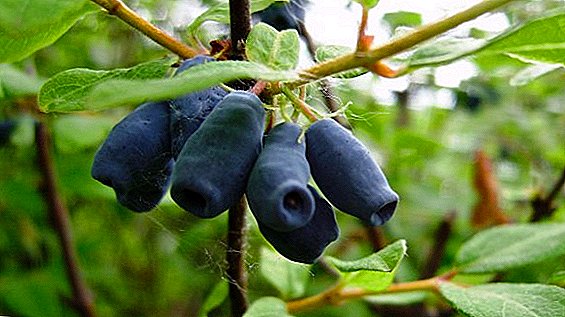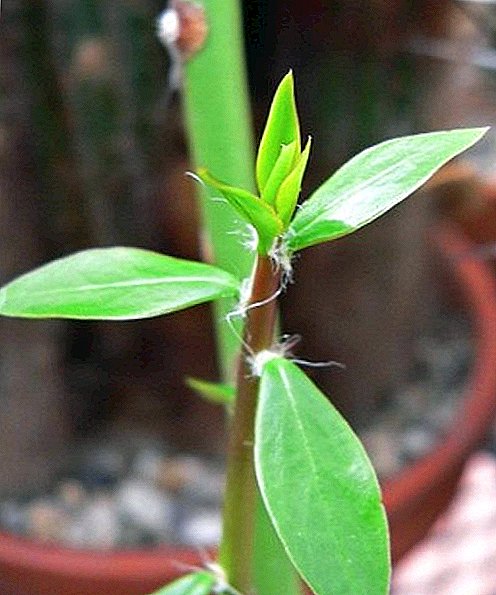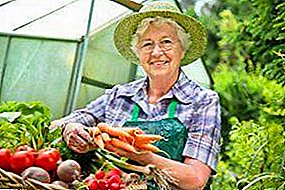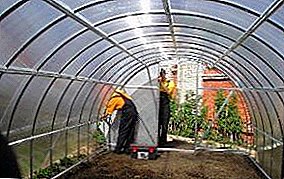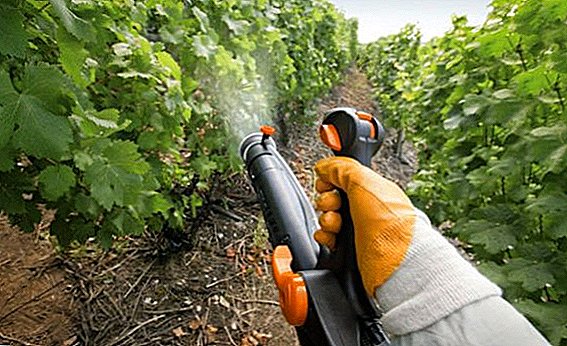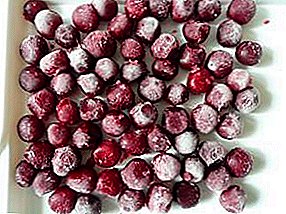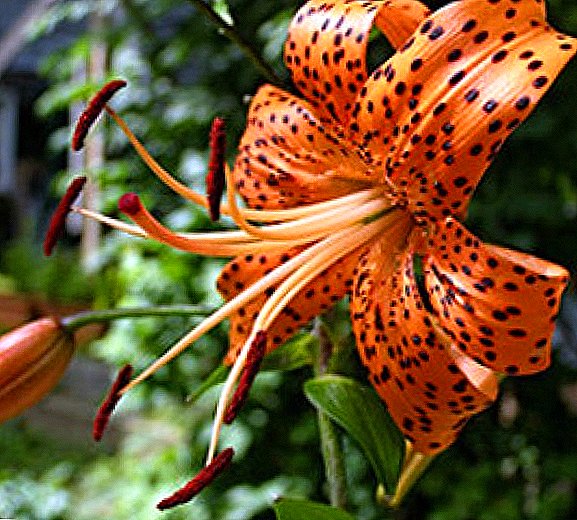
The peach tree is one of the oldest garden cultures that man cultivates. At first, this fruit plant was grown only in warm subtropical countries. But for many years, peaches are grown and with us.
This was possible due to the fact that the cold-resistant varieties of this tasty fruit were bred. Despite this, the peach tree is still a thermophilic and very delicate culture that requires special care and care. That is why it is necessary to help him with proper care and feeding.
Let's start with the soil

For each tree in the garden, it is important to choose the right place where it will be planted, and also to find out the suitability of the land for the garden. This is influenced by the type of soil, the terrain, the proximity of groundwater and soil fertility.
During the determination of the site for future planting, it is necessary to remember several rather important points: how will the plant relate to this soil, know the temperature of the soil and its humidity, as well as the width and depth of growth of the rhizome itself. At the same time, the soil is the top layer of soil in which practically the entire root mass of the berry and fruit plants is located.
The soil consists of a soil horizon, the physical property and chemical composition of which differ in fertility. It also greatly affects the distribution and nature of the growth of the root system of trees.
It is worth noting that peach does not like raw, swampy, as well as lowland areas. For this culture, it is recommended to choose the southern corner of the site, which at the same time is well lit and protected from the wind. Peach is planted at a distance of about three meters from the rest of the plantations. It is important to know that after strawberries, clover, alfalfa, melon and solanaceous crops, peaches are not planted in the place of their previous germination for 3-4 years. It is badly reflected on the tree, and it can get sick.
Go to fertilizer

The success of growth and fruiting of any tree, in general, depends on the content of trace elements in the land on which it lives. Over the years, nutrients and trace elements in the soil dry up, which in consequence leads to the depletion of the earth. Therefore, the soil in the garden requires all the time to feed and fertilize.
The nutrients that affect the normal growth and yield of plants are divided into two types. The first variety includes macronutrients. These include carbon, hydrogen, oxygen, nitrogen, calcium, potassium, phosphorus, sulfur, iron, magnesium. Another variety is trace elements. These include copper, manganese, boron, molybdenum, zinc, cobalt and others. Macronutrients, as a rule, use more than trace elements. The peach is not very capricious and does not particularly need organic feeding. But still, like most horticultural crops, it requires some mineral maintenance for recuperation and an annual harvest.
Nutrients trees consume basically from the ground in the form of an aqueous solution, oxygen and carbon are obtained from air. An important organic element for soil is humus (a derivative of the decay process of organic residues). With humus, the soil is darker and more fertile, and its chemical, biological, and physical properties increase. Humus accumulates by regularly feeding the earth with organic fertilizers, as well as by liming the soil.
For the first time the soil is fertilized, preparing the ground for planting a young tree. The peach tree is a southern plant in its origin that loves warmth and is not very resistant to strong drops in temperature. Therefore, the peach is planted in the spring, somewhere in the middle of April, when the ground has melted and dried out.
For this purpose, even in the fall, six weeks before the first frosts, prepare a pit for planting. Humus or compost is put into it in the amount of 15-25 kg, nitrogenous, phosphoric and micronutrient fertilizers - about 100-300 g each. All this is thoroughly mixed with the fertile top layer of earth and poured into a heap on the very bottom of the pit. A peg is driven into the center of the pit, to which after planting a seedling is tied up.

After planting the seedling, its rhizome is spread on the sides of such a hill and covered with the lower layer of soil, while it is compacted all the time. A small ditch and roller are made near the pit.that will trap moisture. The soil is plentifully watered and powdered with sawdust, leaves, peat (about 5-10 cm thick).
The fertility of the soil in the garden should be maintained by making mineral and organic fertilizers. Especially fruit trees need nitrogen, potassium and phosphorus. Nitrogen affects vegetative growth and the formation of fruits. A large amount of it is required in the spring, when leaves are growing vigorously, shoots and fruit are tied. Nitrogen and organic fertilizers are used to fill the soil with nitrogen. To this end, each spring ammonium nitrate is added to the near-stem circles.
Potassium absorption from carbon dioxide from air and nitrogen from the earth depends on potassium; it also increases resistance to low temperature and dry weather. Potash fertilization is carried out with the help of potash mineral fertilizers, or wood ash, which contains 10% of this element. Ash is stored in a dry corner and applied to the soil throughout the year.
Phosphorus is involved in the division of cells of any plant, and affects the formation of flower buds, as well as the development of fruits. Phosphate dressing has a huge impact on the size of the crop and its quality, namely the sweetness and safety of the fruit. Working solution of phosphorus is processed peach leaves before flowering, at air temperature not higher than 25 degrees.
Very useful fertilizers for soil are compost, manure, slurry and green manure culture. They are all classified as organic fertilizers. They enrich the soil with nutrients, improve air and water regimes, the physical condition of the soil, and also supply trees with carbon dioxide. They are made regularly, from the very beginning of fruit bearing trees.
On fertile soil organic feeding is done once every 2-3 yearsand where the soil is poor - every year. Bring them in early spring or by digging in late autumn. To enrich the land with nutrients and maintain the soil structure with green manure, grass crops are sown every 2-3 years in the garden. In the case of simultaneous organic and mineral supplements, mineral fertilizers are applied in half the amount.
Also interesting to read about the spring pruning peach
On the benefits of loosening the soil

The plot of land on which the peach tree will be planted, as well as any other garden culture, is firstly leveled, freed from shrubs, large stones and stumps, if any. Next, produce plowing, which is called plantage, i.e. dig up the soil depth of 70-75 cm.
Deep fertile soils limit plowing under the name of semi-planar, it implies digging the soil depth of 45-50 cm.
In addition to plowing, in order to increase air access to the ground, every year in the garden carry out soil treatment loosening. The purpose of loosening is the removal of the waste land from the subsoil to the surface, and the introduction of soil instead of it enriched with humus with the addition of compost or manure.
Another important task of loosening is increasing air access to the soil and destroying the soil crust, as well as destroying the sprouts and weed roots. Due to the fact that the peach root zone should be trimmed from various weeds, loosening is used as an effective method in combating them.
It is worth noting that frequent soil loosening significantly reduces evaporation and increases water absorption. They carry out these works in the garden in early spring, using hoes, cultivators and hoppers.
Go to the watering

Water is the most important vital element of all life on earth. It is very necessary for animals and plants. But you need to know that moisture should be exactly as much as the plant consumes. Excess moisture, as well as its insufficient quantity, leads to the death of trees.
Watering of the orchard is made regularly and fairly abundantly, especially during droughts (about 1 time for seven days). After all, in conjunction with irrigation, fertilizers provide the most effective result. Peach Tree is enough drought resistant culture, but a good harvest of its fruit is impossible without timely watering. That is why it is well watered immediately after planting. In this case, 4-5 buckets of water are poured into the basal zone.
During the irrigation of the peach orchard, the overmoistening of plants is unforgivable. Increased humidity leads to insufficient aeration and impairs the vital activity of the rhizome of the tree.
For watering the peach garden make special grooves-depths of 8-10 cm, the length of which does not exceed 60-80 m, the distance between them is 30-40 cm. At the same time, one such furrow is dug out on both sides in each row of trees of the young garden, and 3-4 furrows are in each row of the fruit-bearing garden.
During the growing season, watering of peaches is made several times, the first - before flowering, about 10 days. Then the trees are watered periodically during the spring and the whole summer, depending on the amount of precipitation.
Pruning is an important step in tree care.

An important step in the spring care of a peach tree is pruning the crown and branches. It is produced, as a rule, annually. So remove branchesand stimulate the formation of new shoots.
The best period for this procedure is early spring (early March). This is the period when there is no danger of the return of winter frosts, which leads to re-freezing of the tree. If the air temperature was frosty up to -18 degrees and part of the kidneys are freezing, pruning is transferred to the beginning of the growing season - at this time the degree of frostbite and the number of branches required for cutting will be better seen.
It is important to know that the more kidneys damaged in the tree, the weaker they are pruning, and vice versa.
The goal for spring pruning of young peaches is also the formation of the crown of the plant and the stimulation of the ovary of the fruit on it. Peach can be cut only in warm, dry weather..
Go to peach protection
Like any other plant, a peach tree needs protection from cold, sun, pests and diseases. What they are dangerous for this garden plant and how to protect it and protect against these influences, we now tell.
We protect from the sun
The peach tree loves solar heat and light, these two components are very important for its good growth and abundant harvest. A peach is planted far from old and tall trees to ensure that there is no shade for the young tree. The distance to other plants should not be less than 3 meters.
If this condition is not fulfilled, and the tree is shaded, the wood of the young shoots will not mature before the onset of autumn, the flower buds will be poorly planted, which, in turn, will cause a decrease in yield, fruit quality and possible death of the plant itself.
We protect the tree from the cold

Peach withstands cold and frost down to -25 degrees. But forget that this southern plant is not necessary.
Peach the tree is very thermophilic and can freeze in the winter. Deciduous and flower buds of the tree and rhizome are most susceptible to freezing. Knowing this from the very beginning, for the safe growth and full development of this culture, choose the appropriate place for planting a tree. It should be well lit by the sun and be protected from the wind.
It is advisable to plant the plant on the south side, under any wall or fence, which will also provide additional heat to the tree, as well as protect it from strong gusts of wind and cold.
For the most comfortable development and growth of the peach tree when planting it is necessary to avoid low-lying places, stagnant cold air, as well as marshy areas in which the soil is wetted.
Fighting pests and diseases

The main enemies of peach include pests and specific diseases. The most common diseases of this fruit tree include leaf curl, monilioz, blister, powdery mildew. Pests that most often plague a given crop include aphid, flowering weevil, mites, oriental moth, fruit moth.
To fight them conduct timely chemical processing, correctly and correctly build a system of protection.
To prevent pests from multiplying, the garden area needs to be kept clean all the time. When weeds are clogged in gardens, especially perennial species, the most suitable conditions for the development of pests are created, especially aphids.
The weed is used by the pest as an intermediate plant and food, so they are removed, mowed or poisoned with the help of herbicides. Sure to tree must be removedthat grows near the root, as on it, in many cases, many varieties of aphids develop. With the same purpose, do the cleaning of the bark that remained on the trunk and skeletal branches.
They do not like sucking pests and mineral fertilizers. Minerals increase the pressure of the cell sap in the tree, and this makes it difficult for the insects to feed. The resistance of the garden to damage also increases phosphate-potassium fertilizer.
With the preventive purpose to protect trees from many of the listed diseases and pests, produce pruning, removal of affected branches, destruction of rotten, diseased fruits and leaves, treatment of gum wounds.
Cooking a peach for winter

Preparation of the garden for the winter begins in the fall. Trees attentively look through, at the same time they remove broken branches, dry fruits, in which pores of many diseases are stored and pests like to winter. Then the peach culture is treated with Borodian 3% liquid, but before that, to saturate the tree with enough moisture for the winter, it must be watered.
Is always near the peach is harvested mulch. During severe frosts, it can protect the rhizome and the tree itself from freezing, but not earlier, since mulching in warm, wet weather can lead to decay of the radical neck and still contribute to the development of various fungal diseases.
For the winter, it is desirable to cover the peach sacking. For this, pine needles, spruce branches and other suitable material are still widely used. This will protect the tree from winter adversity and protect it from the low temperatures that occur in the spring.
Love your garden and care for its inhabitants. Then they will thankfully reward you with a delicious, healthy and abundant harvest.


